Morphological Effects of Strain Localization in the Elastic Region of Magnetorheological Elastomers
Abstract
1. Introduction
2. Materials and Methods
2.1. Production of the Test Sample
2.2. Strain Localization and Morphological Observation
3. Results and Discussion
3.1. Shear Band Analysis Using FESEM
3.2. Morphological Analysis Using AFM
3.3. Microstructural Degradation and Stress Performance
4. Conclusions
Author Contributions
Funding
Institutional Review Board Statement
Informed Consent Statement
Data Availability Statement
Conflicts of Interest
References
- Ubaidillah; Sutrisno, J.; Purwanto, A.; Mazlan, S.A. Recent Progress on Magnetorheological Solids: Materials, Fabrication, Testing, and Applications. Adv. Eng. Mater. 2015, 17, 563–597. [Google Scholar] [CrossRef]
- Bastola, A.K.; Paudel, M.; Li, L.; Li, W. Recent progress of magnetorheological elastomers: A review. Smart Mater. Struct. 2020, 29, 123002. [Google Scholar] [CrossRef]
- Elhajjar, R.; Law, C.T.; Pegoretti, A. Magnetostrictive polymer composites: Recent advances in materials, structures and properties. Prog. Mater. Sci. 2018, 97, 204–229. [Google Scholar] [CrossRef]
- Johari, M.A.F.; Mazlan, S.A.; Nasef, M.M.; Ubaidillah, U.; Nordin, N.A.; Aziz, S.A.A.; Johari, N.; Nazmi, N. Microstructural behavior of magnetorheological elastomer undergoing durability evaluation by stress relaxation. Sci. Rep. 2021, 11, 10936. [Google Scholar] [CrossRef] [PubMed]
- Johari, M.A.F.; Mazlan, S.A.; Ubaidillah; Harjana; Abdul Aziz, S.A.; Nordin, N.A.; Johari, N.; Nazmi, N. An Overview of Durability Evaluations of Elastomer-Based Magnetorheological Materials. IEEE Access 2020, 8, 134536–134552. [Google Scholar] [CrossRef]
- Qi, S.; Yu, M.; Fu, J.; Zhu, M. Stress relaxation behavior of magnetorheological elastomer: Experimental and modeling study. J. Intell. Mater. Syst. Struct. 2018, 29, 205–213. [Google Scholar] [CrossRef]
- Yu, G.J.; Lin, X.G.; Guo, F. Modeling and Verification of Relaxation Behavior for Magnetorheological Elastomers with Applied Magnetic Field. Key Eng. Mater. 2017, 730, 527–532. [Google Scholar] [CrossRef]
- Johari, M.A.F.; Mazlan, S.A.; Ubaidillah; Nordin, N.A.; Abdul Aziz, S.A.; Johari, N.; Nazmi, N.; Homma, K. Shear band formation in magnetorheological elastomer under stress relaxation. Smart Mater. Struct. 2021, 30, 045015. [Google Scholar] [CrossRef]
- Nam, T.H.; Petríková, I.; Marvalová, B. Experimental and numerical research of stress relaxation behavior of magnetorheological elastomer. Polym. Test. 2021, 93, 106886. [Google Scholar] [CrossRef]
- Hufnagel, T.C.; Schuh, C.A.; Falk, M.L. Deformation of metallic glasses: Recent developments in theory, simulations, and experiments. Acta Mater. 2016, 109, 375–393. [Google Scholar] [CrossRef]
- Jagla, E.A. Strain localization driven by structural relaxation in sheared amorphous solids. Phys. Rev. E 2007, 76, 046119. [Google Scholar] [CrossRef] [PubMed]
- Cao, Y.; Li, J.; Kou, B.; Xia, C.; Li, Z.; Chen, R.; Xie, H.; Xiao, T.; Kob, W.; Hong, L.; et al. Structural and topological nature of plasticity in sheared granular materials. Nat. Commun. 2018, 9, 2911. [Google Scholar] [CrossRef] [PubMed]
- He, J.; Kaban, I.; Mattern, N.; Song, K.; Sun, B.; Zhao, J.; Kim, D.H.; Eckert, J.; Greer, A.L. Local microstructure evolution at shear bands in metallic glasses with nanoscale phase separation. Sci. Rep. 2016, 6, 25832. [Google Scholar] [CrossRef] [PubMed]
- Dasgupta, R.; Hentschel, H.G.E.; Procaccia, I. Microscopic mechanism of shear bands in amorphous solids. Phys. Rev. Lett. 2012, 109, 255502. [Google Scholar] [CrossRef] [PubMed]
- An, Q.; Reddy, K.M.; Qian, J.; Hemker, K.J.; Chen, M.W.; Goddard, W.A. Nucleation of amorphous shear bands at nanotwins in boron suboxide. Nat. Commun. 2016, 7, 11001. [Google Scholar] [CrossRef] [PubMed]
- Shen, L.Q.; Luo, P.; Hu, Y.C.; Bai, H.Y.; Sun, Y.H.; Sun, B.A.; Liu, Y.H.; Wang, W.H. Shear-band affected zone revealed by magnetic domains in a ferromagnetic metallic glass. Nat. Commun. 2018, 9, 4414. [Google Scholar] [CrossRef] [PubMed]
- Johari, M.A.F.; Mazlan, S.A.; Nordin, N.A.; Ubaidillah, U.; Aziz, S.A.A.; Nazmi, N.; Johari, N.; Choi, S.-B. The Effect of Microparticles on the Storage Modulus and Durability Behavior of Magnetorheological Elastomer. Micromachines 2021, 12, 948. [Google Scholar] [CrossRef]
- Ashwin, J.; Gendelman, O.; Procaccia, I.; Shor, C. Yield-strain and shear-band direction in amorphous solids under two-dimensional uniaxial loading. Phys. Rev. E 2013, 88, 022310. [Google Scholar] [CrossRef]
- Pan, J.; Chen, Q.; Liu, L.; Li, Y. Softening and dilatation in a single shear band. Acta Mater. 2011, 59, 5146–5158. [Google Scholar] [CrossRef]
- Triantafyllidis, T.; Wolf, H.; Ko, D. Experimental investigation of shear band patterns in granular material. J. Struct. Geol. 2003, 25, 1229–1240. [Google Scholar]
- Johari, M.A.F.; Sarman, A.M.; Mazlan, S.A.; Ubaidillah, U.; Nordin, N.A.; Abdul Aziz, S.A.; Johari, N.; Nazmi, N.; Mohd Yusuf, S. An Insight into Amorphous Shear Band in Magnetorheological Solid by Atomic Force Microscope. Materials 2021, 14, 4384. [Google Scholar] [CrossRef] [PubMed]
- Bica, I. The influence of the magnetic field on the elastic properties of anisotropic magnetorheological elastomers. J. Ind. Eng. Chem. 2012, 18, 1666–1669. [Google Scholar] [CrossRef]
- Kumar, V.; Lee, D.J. Iron particle and anisotropic effects on mechanical properties of magneto-sensitive elastomers. J. Magn. Magn. Mater. 2017, 441, 105–112. [Google Scholar] [CrossRef]
- Agirre-Olabide, I.; Elejabarrieta, M.J.; Bou-Ali, M.M. Matrix dependence of the linear viscoelastic region in magnetorheological elastomers. J. Intell. Mater. Syst. Struct. 2015, 26, 1880–1886. [Google Scholar] [CrossRef]
- Guan, X.; Dong, X.; Ou, J. Magnetostrictive effect of magnetorheological elastomer. J. Magn. Magn. Mater. 2008, 320, 158–163. [Google Scholar] [CrossRef]
- Kaleta, J.; Królewicz, M.; Lewandowski, D. Magnetomechanical properties of anisotropic and isotropic magnetorheological composites with thermoplastic elastomer matrices. Smart Mater. Struct. 2011, 20, 085006. [Google Scholar] [CrossRef]
- Fan, Y.; Gong, X.; Xuan, S.; Zhang, W.; Zheng, J.; Jiang, W. Interfacial friction damping properties in magnetorheological elastomers. Smart Mater. Struct. 2011, 20, 035007. [Google Scholar] [CrossRef]
- Johari, M.A.F.; Mazlan, S.A.; Ubaidillah, U.; Nordin, N.A.; Ahmad Khairi, M.H.; Abdul Aziz, S.A.; Sedlacik, M.; Nikmat Leong, S.A. Natural Weathering Effects on the Mechanical, Rheological, and Morphological Properties of Magnetorheological Elastomer (MRE) in Tropical Climate. Int. J. Mol. Sci. 2022, 23, 9929. [Google Scholar] [CrossRef]
- Davis, L.C. Model of magnetorheological elastomers. J. Appl. Phys. 1999, 85, 3348–3351. [Google Scholar] [CrossRef]
- Kukla, M.; Warguła, Ł.; Talaśka, K.; Wojtkowiak, D. Magnetorheological Elastomer Stress Relaxation Behaviour during Compression: Experiment and Modelling. Materials 2020, 13, 4795. [Google Scholar] [CrossRef]
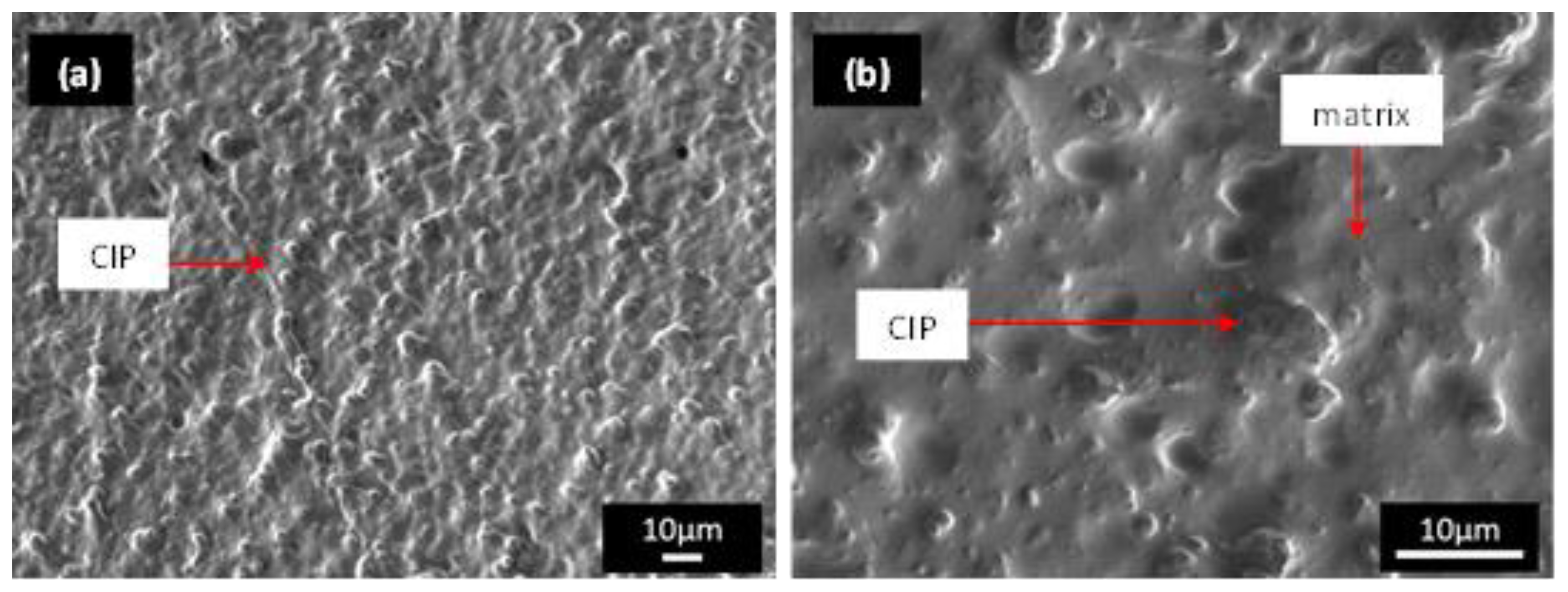


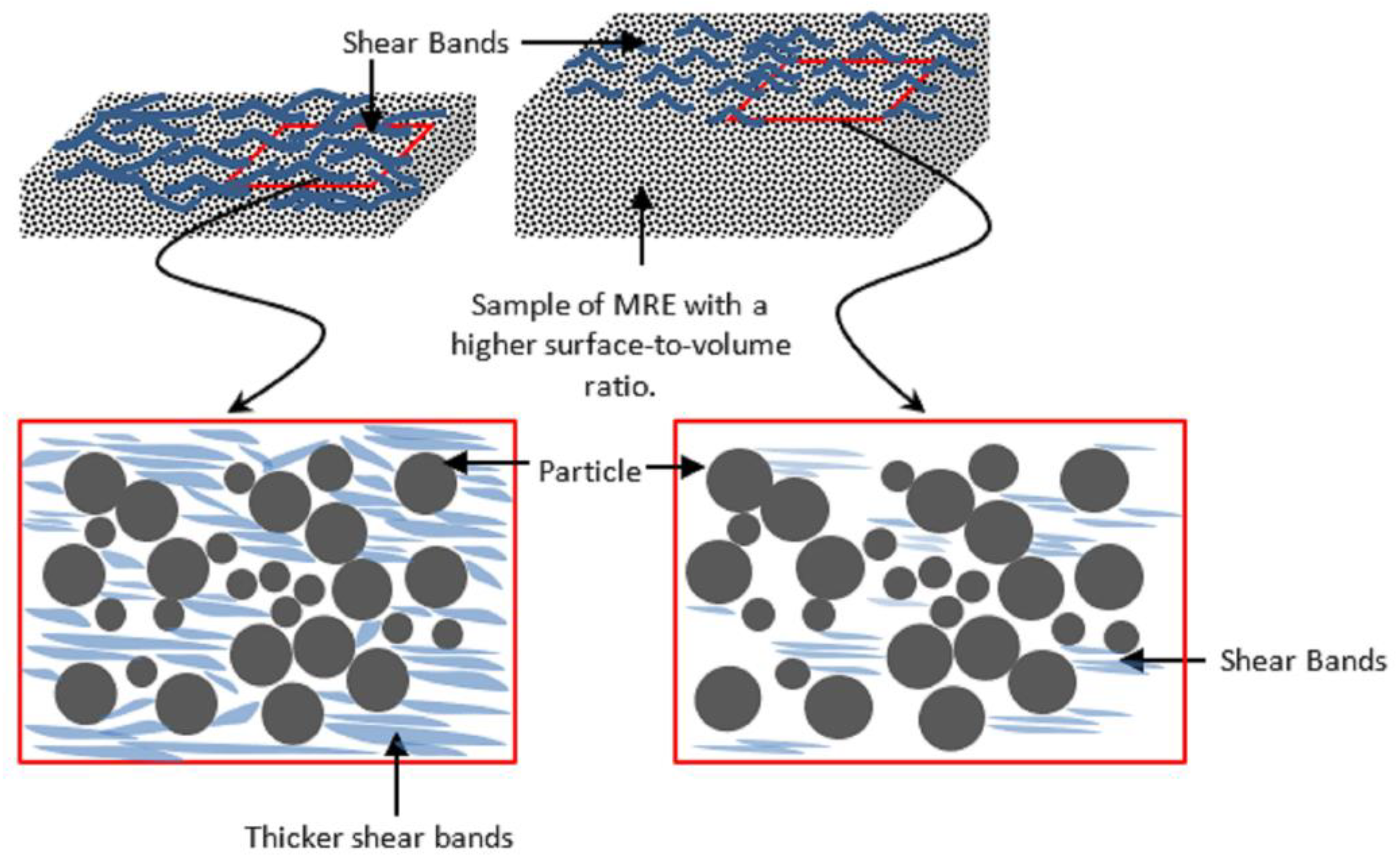

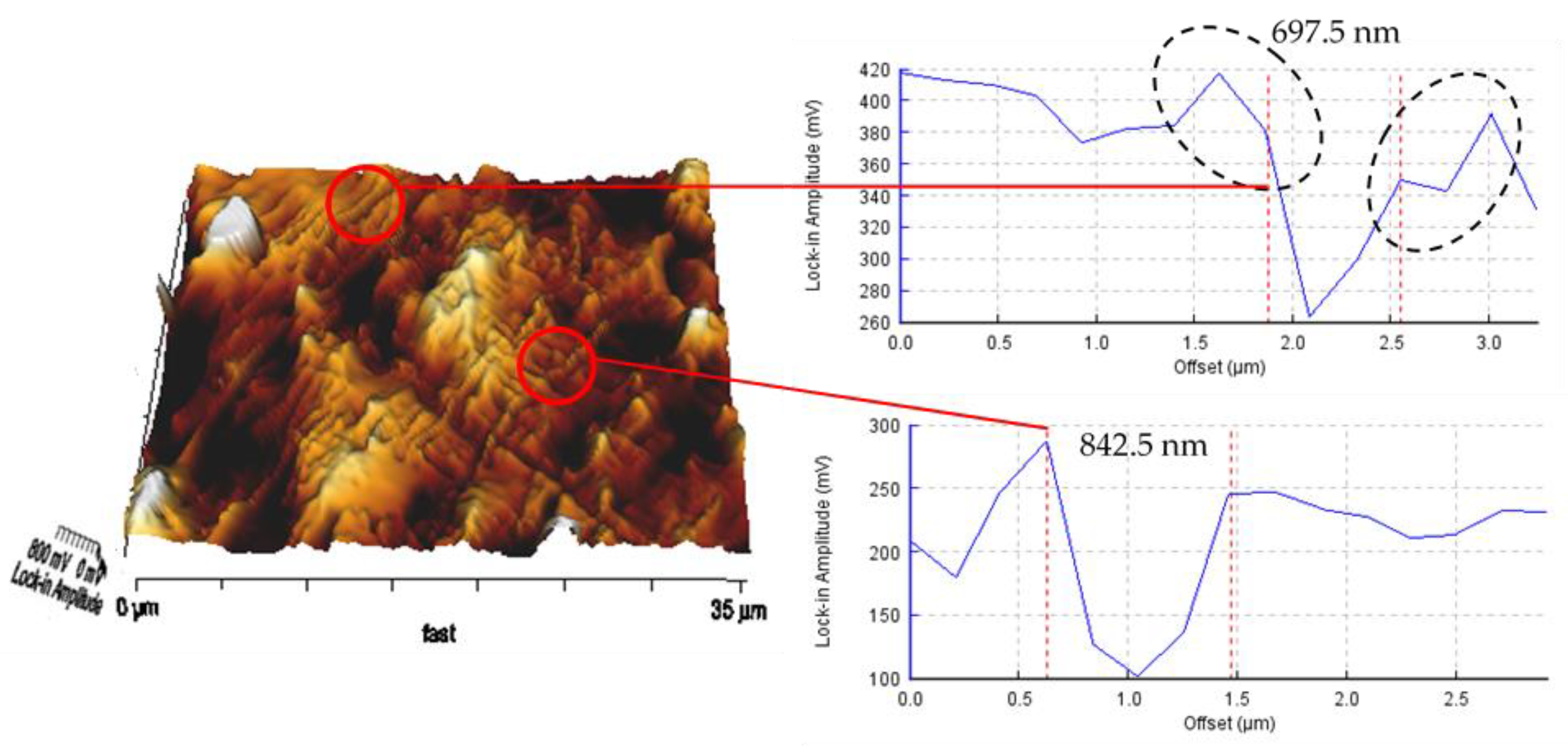
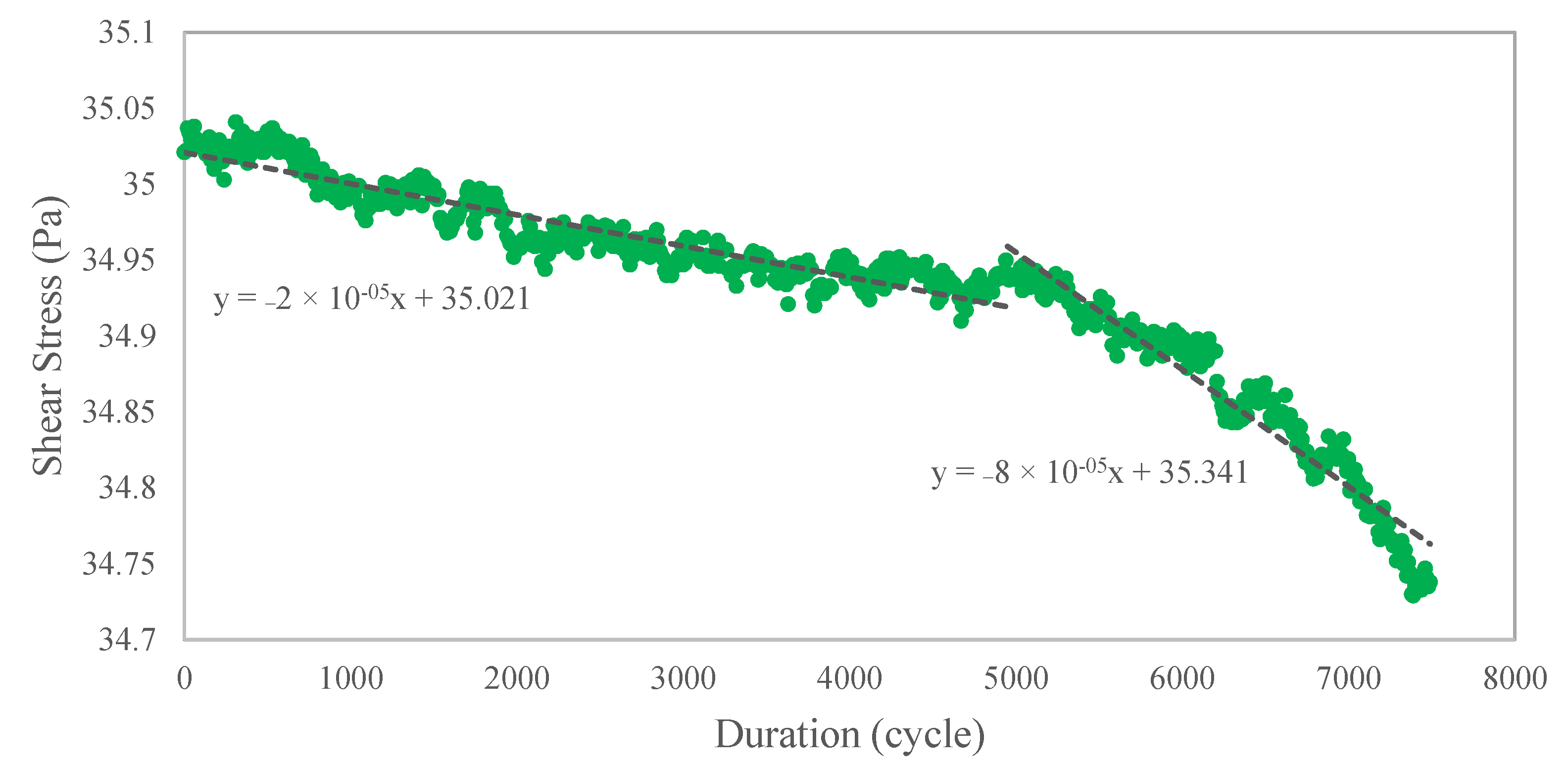
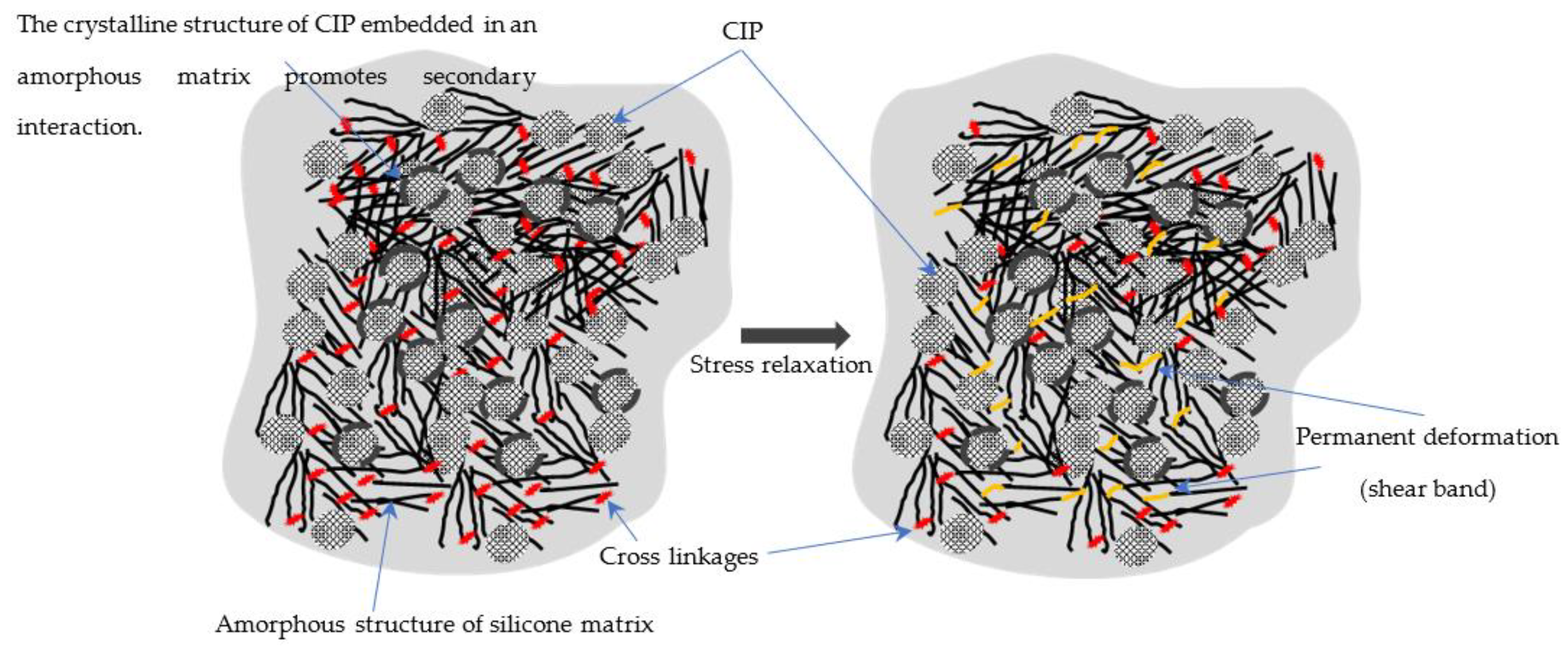
Publisher’s Note: MDPI stays neutral with regard to jurisdictional claims in published maps and institutional affiliations. |
© 2022 by the authors. Licensee MDPI, Basel, Switzerland. This article is an open access article distributed under the terms and conditions of the Creative Commons Attribution (CC BY) license (https://creativecommons.org/licenses/by/4.0/).
Share and Cite
Johari, M.A.F.; Mazlan, S.A.; Nordin, N.A.; Choi, S.-B.; Aziz, S.A.A.; Daud, S.; Bahiuddin, I. Morphological Effects of Strain Localization in the Elastic Region of Magnetorheological Elastomers. Materials 2022, 15, 8565. https://doi.org/10.3390/ma15238565
Johari MAF, Mazlan SA, Nordin NA, Choi S-B, Aziz SAA, Daud S, Bahiuddin I. Morphological Effects of Strain Localization in the Elastic Region of Magnetorheological Elastomers. Materials. 2022; 15(23):8565. https://doi.org/10.3390/ma15238565
Chicago/Turabian StyleJohari, Mohd Aidy Faizal, Saiful Amri Mazlan, Nur Azmah Nordin, Seung-Bok Choi, Siti Aishah Abdul Aziz, Shaari Daud, and Irfan Bahiuddin. 2022. "Morphological Effects of Strain Localization in the Elastic Region of Magnetorheological Elastomers" Materials 15, no. 23: 8565. https://doi.org/10.3390/ma15238565
APA StyleJohari, M. A. F., Mazlan, S. A., Nordin, N. A., Choi, S.-B., Aziz, S. A. A., Daud, S., & Bahiuddin, I. (2022). Morphological Effects of Strain Localization in the Elastic Region of Magnetorheological Elastomers. Materials, 15(23), 8565. https://doi.org/10.3390/ma15238565








